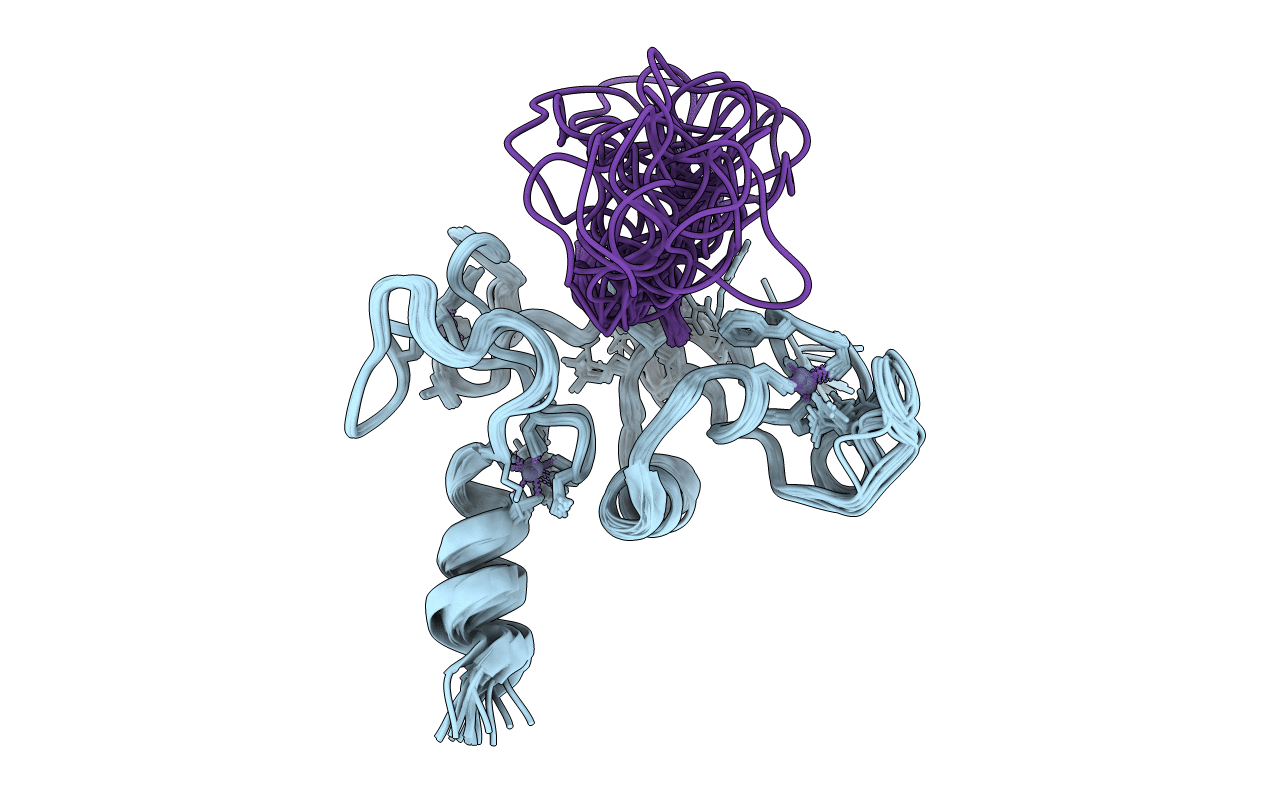
Deposition Date
2010-04-14
Release Date
2010-07-14
Last Version Date
2025-03-26
Entry Detail
PDB ID:
2KWO
Keywords:
Title:
Solution structure of the double PHD (plant homeodomain) fingers of human transcriptional protein DPF3b bound to a histone H4 peptide containing N-terminal acetylation at Serine 1
Biological Source:
Source Organism:
Homo sapiens (Taxon ID: 9606)
Host Organism:
Method Details:
Experimental Method:
Conformers Calculated:
200
Conformers Submitted:
20
Selection Criteria:
structures with the lowest energy


